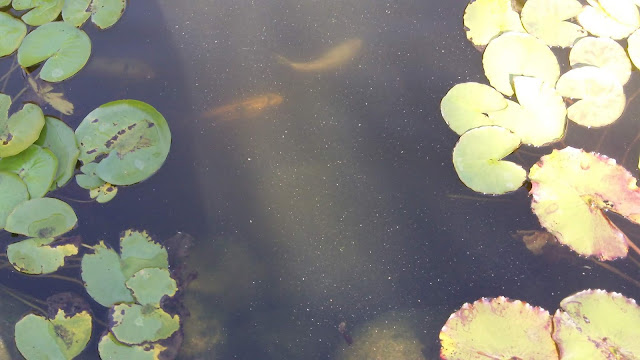How to Overwinter Tropical Aquatic Plants
Tropical water garden plants are so awesome. They provide large foliage and blooms, vivid colors, and love the summer heat. But they are also extremely beneficial to your pond. In early August, hardy plants begin storing energy producing fewer blooms and therefore consuming fewer nutrients from the pond water. Tropical plants on the other hand continue to grow and bloom eating up all the nutrients they can get, helping keep pond water clear and clean.
Please note that this article pertains only to marginal aquatic plants -- those plants that have their foliage and blooms above the water and their root system below the water surface, in the shallow areas of the pond.
Even with the benefits, some people are reluctant to purchase tropical aquatic plants because they don't want to purchase them every year... Here's the good news -- you don't have to! Just over-winter them! Most tropical marginals will over-winter inside easily as house plants.
When Should They Be Brought in?
It's best to bring your plants inside before the first frost. Sometimes they'll make it through a light frost, but better safe than sorry. Keep an eye on the weather. Use this link to find the average first frost in your area.Trim back any dead foliage before bringing the plant inside. We usually recommend keeping your tropical plants in their containers in the pond to make them easier to transport from the pond to the house for winter.
Water
It's not necessary to keep your plants completely submerged, but they need to stay damp. Place them in a pot with no holes and add water. As the water evaporates, you can fill it again. Choose a decorative container so that your plants can look nice inside as well. I will usually set the pot they are in (from the pond) into another pot that is decorative. (This makes it easy to take the plant back out to the pond in the spring.)Misting the plants periodically with a small sprayer is a good idea. Our homes are usually dry in the winter and the plants can benefit from some extra "precipitation."
Light Requirements
Again, treat these plants like houseplants. A southern window is excellent. It's not uncommon for plants to stretch to the light or become a little leggy and thin. It's a good idea to rotate the pot and keep the plant trimmed down somewhat.
Fertilization
Don't fertilize plants while they're "wintering." Your goal is to keep the plant alive, not make it thrive.In late February or March you can begin using a diluted liquid fertilizer if you wish. (Unless your kitties like drinking the water from the pots like ours do!) We usually wait until we put our plants back outside to begin fertilizing again.
Taking Plants Back Outside
The key to taking your plants back outside is to not shock them. Placing them outside again while its still cool or back in the full sun after being inside all winter can cause them to be shocked. Gradually move them back into the sun and wait until temperatures during the day are close to the temperature inside your home. It's a good idea to re-pot them and add some year-long fertilizer when they go back outside.Tropical plants provide so much beauty and benefits to your pond. We have a great selection of both tropical and hardy plants April - August. Try some and you'll be hooked.




Comments